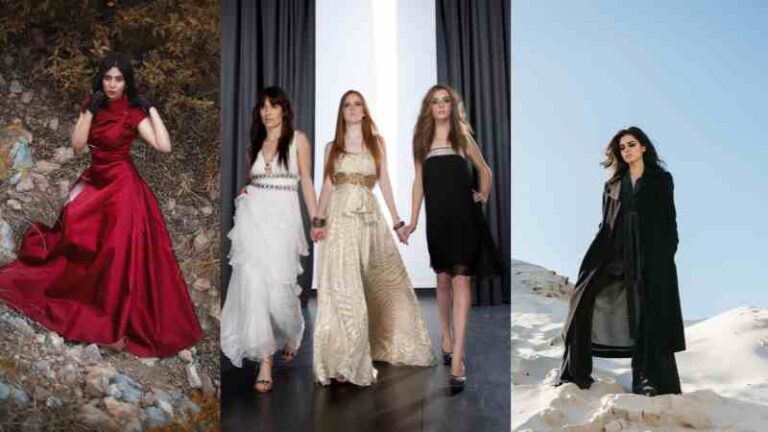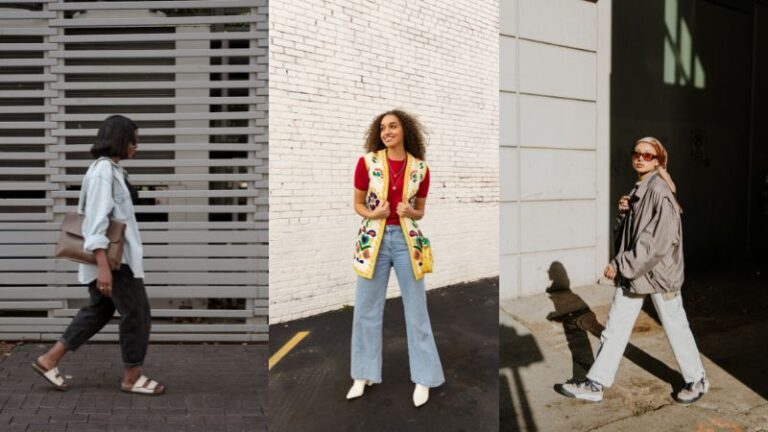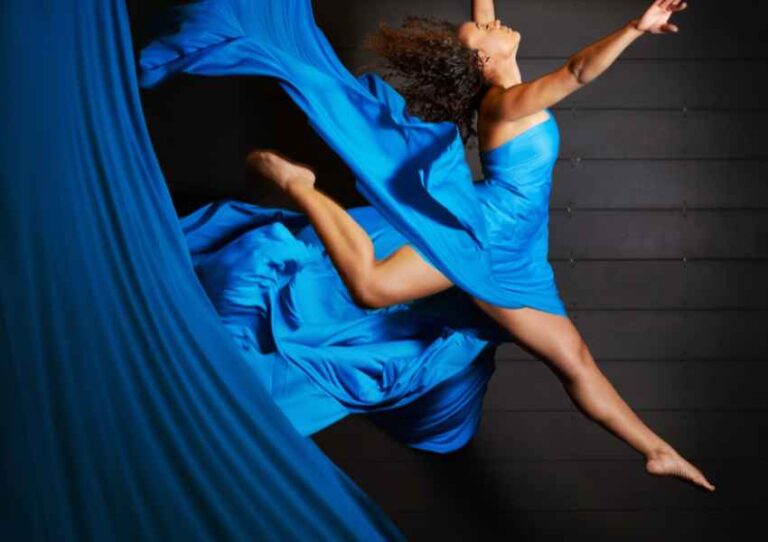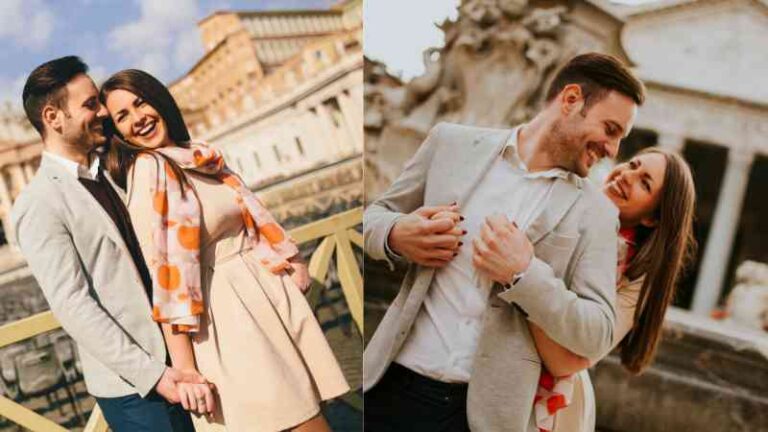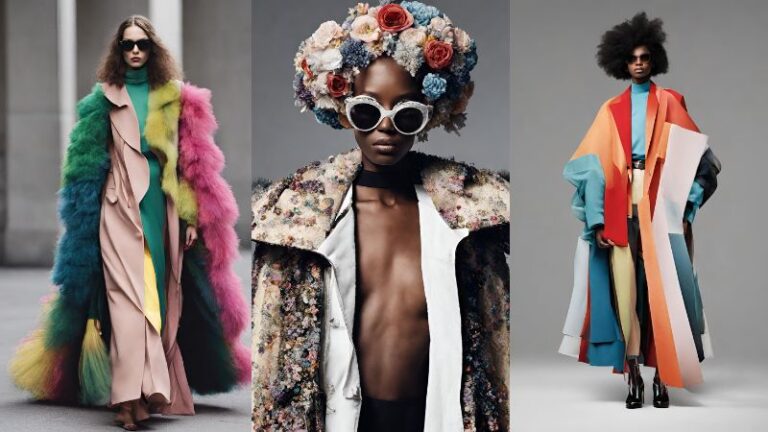Street style has emerged as a powerful force, shaping and redefining the way we perceive and engage with fashion culture. The era of top designers and runway shows dictating high fashion is over. Street style has revolutionized the industry, allowing individuals to express their unique sense of style and influencing the fashion landscape like never before. Find more information about The Influence of Street Style on Fashion Cultures.
Street style has become a phenomenon that transcends geographical boundaries and social hierarchies. It is a reflection of the diverse and dynamic nature of our society, showcasing a myriad of individualistic and unconventional fashion choices. From the stylish streets of New York City to the vibrant alleys of Tokyo, street style has become a global language, connecting fashion enthusiasts and inspiring new trends. This cultural movement has challenged traditional notions of fashion, blurring the lines between high-end luxury and everyday wear.
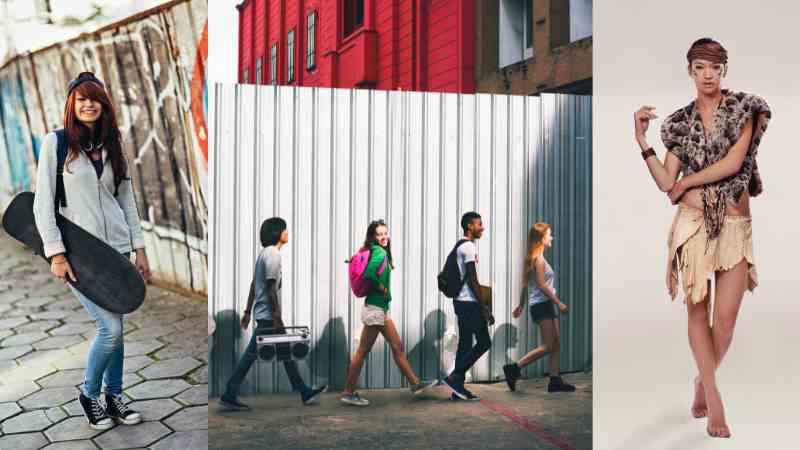
How has streetwear influenced fashion?
Streetwear has had a significant impact on the fashion industry, transforming the way people dress and influencing mainstream trends. The movement originated in urban culture and is characterized by casual, comfortable clothing that reflects the individuality and personal style of the wearer. Streetwear has blurred the lines between high fashion and everyday wear, bringing a fresh and edgy aesthetic to the fashion world.
One of the ways streetwear has influenced fashion is through the rise of athleisure. This trend combines athletic and leisurewear, creating a comfortable yet fashionable look. Streetwear brands like Supreme, Off-White, and Nike have embraced this style, incorporating elements of sportswear into their designs. As a result, activewear has become a staple in many people’s wardrobes, with sweatpants, hoodies, and sneakers being worn not just for workouts but also as everyday attire.
Moreover, streetwear has challenged traditional gender norms in fashion. The movement has embraced androgyny, providing a platform for individuals to express themselves regardless of gender. Oversized silhouettes, neutral colors, and unisex designs have become prominent in streetwear, breaking free from the constraints of gendered clothing. This inclusivity has had a profound impact on the fashion industry, pushing for more diversity and acceptance of different styles and identities.
What Is the Culture of Streetwear?
Streetwear culture is a unique and influential subculture that has its roots in urban fashion and lifestyle. It emerged in the 1980s and 1990s as a response to the mainstream fashion industry and has since become a global phenomenon. Streetwear is characterized by its casual and comfortable style, often influenced by skateboarding, hip-hop, and graffiti culture.
One key aspect of streetwear culture is its emphasis on individuality and self-expression. Streetwear enthusiasts often use fashion as a means to express their personal style and identity. They mix and match different brands, colors, and patterns to create unique and eye-catching outfits. Streetwear brands like Supreme, Off-White, and A Bathing Ape have gained a cult following for their limited-edition releases and collaborations with artists and designers.
Another defining feature of streetwear culture is its connection to street art and music. Graffiti, street murals, and urban landscapes often serve as inspiration for streetwear designs, creating a visual language that reflects the energy and vibrancy of the streets. Streetwear is also closely tied to hip-hop music, with many artists and influencers in the music industry becoming synonymous with the streetwear aesthetic.

Why is street style important?
Street style has become a significant part of the fashion industry, allowing individuals to express their unique sense of style and creativity. It is a form of self-expression that goes beyond the boundaries of traditional fashion norms and provides a platform for individuals to showcase their personal style and individuality.
Street style is important because it reflects the cultural and social influences of a particular time and place. It is a visual representation of the diverse elements that shape our society, such as music, art, and youth culture. Street style allows people to experiment with different fashion trends and reinterpret them in their own way, creating a visual dialogue between individuals and their surroundings.
Furthermore, street style has had a significant impact on the fashion industry, influencing designers, brands, and even high-end fashion houses. Fashion designers often draw inspiration from street style, incorporating elements of it into their collections. Street style has become a source of inspiration and innovation, challenging traditional fashion norms and pushing boundaries.
In conclusion, street style is important as it allows individuals to express their unique sense of style, reflects the cultural and social influences of a particular time and place, and has a significant impact on the fashion industry. It is a form of self-expression that goes beyond traditional fashion norms and provides a platform for individuals to showcase their personal style and individuality. Street style is an integral part of our society, shaping and influencing the fashion industry while reflecting the diverse elements that make up our culture.
What are the cultural influences on fashion?
Cultural influences play a significant role in shaping fashion trends. Various cultures around the world have distinct styles, traditions, and values that are reflected in their clothing choices. For example, traditional Japanese fashion is known for its minimalist designs and emphasis on clean lines and natural fabrics. In contrast, Indian fashion is vibrant and colorful, with intricate patterns and embellishments. These cultural influences not only impact the aesthetics of fashion but also the materials used, the construction techniques, and even the ways in which garments are worn.
Another cultural influence on fashion is the concept of modesty. Different cultures have different standards and expectations when it comes to modesty in dress. For instance, in many Middle Eastern countries, traditional clothing for women includes garments such as the abaya, which covers the entire body except for the face and hands. In contrast, Western fashion tends to prioritize more revealing styles. These differing cultural perspectives on modesty influence the design and construction of clothing as well as the choices individuals make in their personal style.
Cultural celebrations and festivals also play a significant role in shaping fashion trends. Events such as Chinese New Year, Diwali, or Carnival inspire designers to create collections that celebrate the culture and traditions associated with these festivities. These collections often feature specific colors, patterns, and motifs that are significant to the culture being celebrated. Cultural celebrations provide an opportunity for fashion to not only showcase diversity but also bring people together through the appreciation and understanding of different cultures.
Punk Fashion
Punk fashion has had a significant influence on street style and fashion culture. Originating in the 1970s, punk fashion emerged as a rebellious and anti-establishment style characterized by its bold and unconventional elements. The influence of punk fashion can still be seen today in various aspects of street style and mainstream fashion.
One of the key features of punk fashion is its DIY (do-it-yourself) ethos. Punk enthusiasts often create their own clothing and accessories using safety pins, studs, patches, and unconventional materials. This DIY approach to fashion has inspired individuals to experiment and personalize their own style, leading to the rise of individualism and self-expression in street fashion.
Punk fashion also introduced elements such as ripped clothing, leather jackets, and band t-shirts, which have become iconic symbols of rebellion and counterculture. Designers and fashion brands have adopted and reinterpreted these elements, resulting in their incorporation into mainstream fashion collections. Today, it’s common to see punk-inspired pieces on runways and in street style looks, showcasing the lasting impact of punk fashion on contemporary fashion culture.
In addition to its visual elements, punk fashion also influenced the attitude and mindset surrounding fashion. Punk fashion challenged traditional notions of beauty and encouraged individuals to embrace their unique style and identity. This ethos of nonconformity and self-expression continues to shape street style and fashion culture, with individuals using fashion as a means of self-representation and empowerment.
- Punk fashion allows individuals to experiment and personalize their style.
- Punk fashion introduced elements such as ripped clothing, leather jackets, and band t-shirts.
- Punk fashion challenged traditional notions of beauty and encouraged individuality.
Boho‑chic
Street style has become a major influence on fashion culture, with different subcultures and trends emerging from the streets and making their way into the mainstream. One such trend that has gained popularity in recent years is boho chic. Boho-chic combines bohemian and hippie elements with a modern and trendy twist, resulting in a unique and laid-back style.
Boho-chic fashion is characterized by flowing and loose-fitting garments, such as maxi dresses, peasant tops, and oversized sweaters. These pieces are often made from natural materials like cotton, linen, and suede, adding to the earthy and bohemian feel of the style. Accessories play a key role in completing the boho-chic look, with items like floppy hats, fringe bags, and statement jewelry adding a touch of individuality and bohemian flair.
The influence of boho chic can be seen not only on the streets but also in high-end fashion and on the runways. Many designers have incorporated boho-chic elements into their collections, showcasing the versatility and appeal of this style. Celebrities and influencers have also embraced boho-chic, further popularizing the trend and inspiring others to adopt this free-spirited and effortlessly cool style.
Overall, boho-chic has had a significant impact on fashion culture, proving that street style can have a profound influence on mainstream fashion. Its combination of bohemian elements with modern trends has created a unique and appealing style that has gained a worldwide following. Whether you’re looking to embrace a more relaxed and carefree aesthetic or simply want to add some boho-chic elements to your wardrobe, this trend offers a versatile and fashionable option for fashion-forward individuals.
Athleisure
Street style has become a significant influence on fashion culture in recent years. One particular trend that has gained popularity is athleisure, a style that combines athletic and leisurewear. Athleisure has revolutionized the way people dress by merging comfort and functionality with fashion. It is characterized by the use of sporty elements such as sneakers, leggings, hoodies, and tracksuits in everyday outfits.
The rise of athleisure can be attributed to the increasing importance of health and wellness in people’s lives. As individuals prioritize fitness and active lifestyles, they seek clothing that can seamlessly transition from the gym to daily activities. Athleisure provides the perfect solution by offering comfortable and flexible clothing options that are suitable for both exercise and casual wear.
Another reason for the popularity of athleisure is the growing influence of street style. Street fashion has become a significant source of inspiration for designers and fashion enthusiasts alike. The streets have become a runway for people to showcase their personal style, and athleisure has become a staple in street fashion. Influencers and celebrities have been spotted wearing athleisure outfits, further fueling its popularity and making it a mainstream trend.
In conclusion, athleisure has had a significant impact on fashion culture thanks to its ability to combine comfort and style. It has become a reflection of the rising importance of health and wellness and the influence of street style. As athleisure continues to evolve, it is likely to remain a prominent trend in the fashion industry.
More Post: Fashion Forecasting: Trends, Culture, And Commerce
Gyaru
Street style has long been a powerful source of inspiration for the fashion industry, and one subculture that has made a significant impact is Gyaru. Originating in Japan, Gyaru is a street style known for its bold and flamboyant looks. With a focus on exaggerated makeup, dyed hair, and trendy clothing, Gyaru has become a prominent influence on fashion culture, both in Japan and around the world.
Gyaru fashion emerged in the 1990s and quickly gained popularity among young women. The style is characterized by its vibrant and eye-catching aesthetics, often featuring colorful and playful clothing choices. Gyaru fashionistas are known for their love of brand names and accessories, with an emphasis on creating a glamorous and attention-grabbing appearance. This street style has not only influenced the way people dress but has also impacted the beauty industry, with the rise of Gyaru-inspired makeup tutorials and products.
One reason for Gyaru’s enduring influence is its ability to challenge traditional beauty standards. The style celebrates individuality and encourages self-expression, often rejecting societal norms of natural beauty. Through their unique fashion choices, Gyaru individuals have sparked conversations around body positivity and diversity. This subculture has empowered many to embrace their own personal style and express themselves authentically.
Gyaru’s impact on fashion culture can be seen in various aspects of the industry, from runway trends to the rise of streetwear. Designers and brands have taken inspiration from Gyaru’s bold and fearless approach to fashion, incorporating elements such as oversized accessories, vibrant colors, and unconventional silhouettes into their collections. This street style has also influenced the way people dress in everyday life, with many individuals adopting Gyaru-inspired looks as a way to express their creativity and individuality.
In conclusion, Gyaru is a street style that has had a significant influence on fashion culture. Its bold and flamboyant aesthetics have challenged traditional beauty standards and empowered individuals to embrace their own unique style. From runway trends to everyday fashion choices, Gyaru’s impact can be seen throughout the industry. Whether you’re a fashion enthusiast or simply looking for inspiration, Gyaru offers a vibrant and exciting perspective on street style.
Grunge Fashion
Street style has always played a significant role in shaping fashion culture. One such influential style is grunge fashion. Grunge fashion emerged in the 1990s as a rebellious and anti-establishment movement. It was heavily influenced by the music genre of the same name, with bands like Nirvana and Pearl Jam popularizing the style. Grunge fashion is characterized by its nonchalant and disheveled look, often incorporating oversized flannel shirts, ripped jeans, combat boots, and layers of mismatched clothing.
Grunge fashion quickly gained popularity and became a symbol of counterculture and individual expression. It challenged the conventional standards of fashion, focusing on a more casual and effortless aesthetic. This street style movement influenced high-end fashion designers, who incorporated grunge elements into their collections. Iconic brands such as Marc Jacobs and Alexander Wang embraced the grunge spirit, bringing it to the forefront of the fashion industry.
Moreover, grunge fashion also had a significant impact on streetwear. It blurred the lines between high fashion and street style, creating a new wave of fashion culture. The DIY aspect of grunge fashion encouraged individuals to experiment with their own style, creating unique and personalized looks. This sense of individuality and authenticity is still prevalent in street style today, where people mix and match different elements to create their own unique outfits.
Overall, grunge fashion’s influence on fashion culture cannot be overlooked. It challenged traditional fashion norms, gave rise to streetwear, and encouraged self-expression. Whether it’s the oversized flannels or ripped jeans we see on the streets today, the spirit of grunge fashion continues to inspire and shape the ever-evolving world of fashion.
More Post: Unlocking The Secrets Of Style: A Guide To Savvy Looks
See More
Street style has become a powerful force in shaping fashion culture. It refers to the way individuals express their personal style through clothing, accessories, and overall appearance while navigating the streets of urban areas. Ordinary people and subcultures have an influence on street style rather than high-end fashion designers or fashion houses. This organic and grassroots approach to fashion has had a significant impact on the industry as a whole.
One of the key influences of street style on fashion culture is its ability to challenge and disrupt traditional fashion norms. Street style allows individuals to experiment with different looks, mix high and low fashion, and create unique ensembles that reflect their personality and identity. This freedom of expression has opened up new possibilities in fashion and encouraged designers and brands to think outside the box.
Another important aspect of street style is its ability to reflect and respond to social and cultural movements. Street style often captures the zeitgeist of a particular era or subculture, showcasing the current trends and attitudes of society. From punk to hip-hop, street style has been a platform for marginalized communities to reclaim their identities and challenge mainstream fashion standards.
Moreover, street style has also become a source of inspiration for high-end fashion designers. Many designers look to street style for fresh ideas and trends, incorporating elements of urban fashion into their collections. This symbiotic relationship between street style and high fashion has blurred the lines between the two, creating a more inclusive and diverse fashion landscape.
In conclusion, street style has revolutionized the fashion industry by promoting individuality, challenging norms, and reflecting social and cultural movements. Its influence can be seen on the runways, in magazines, and even in the wardrobes of everyday people. Street style has transformed fashion culture, making it more accessible, diverse, and representative of the world we live in.
More Post: The Significance of Fashion in Pop Culture
Feedback
Street style has become a significant influence on fashion culture in recent years. It encompasses the clothing choices and personal style of individuals who are not necessarily involved in the fashion industry yet still manage to create unique and inspiring looks. Street style has become a source of inspiration for designers, fashion bloggers, and fashion enthusiasts worldwide.
One of the reasons street style has gained such influence is its authenticity and ability to reflect the diversity of fashion. Unlike traditional fashion weeks and runway shows, street style captures the real-life fashion choices of everyday people. It showcases how individuals mix and match different pieces, experiment with colors and patterns, and incorporate their own personal flair into their outfits. This level of individuality and self-expression has resonated with many fashion lovers, leading to the rise of street style as a driving force in fashion culture.
Street style has also been amplified by social media platforms such as Instagram and Pinterest. Fashion influencers and bloggers have taken to these platforms to share their street-style looks, gaining a large following and influencing trends worldwide. These platforms allow for the instant sharing of fashion inspiration, making street style accessible to a global audience. Moreover, street style has become a key component of fashion photography, with photographers capturing the most stylish individuals on the streets of fashion capitals like New York, Paris, and Tokyo.
Overall, street style has had a profound impact on fashion culture, giving rise to new trends, challenging traditional fashion norms, and celebrating individuality. Its influence can be seen in the way designers incorporate streetwear elements into their collections, in the rise of streetwear brands, and in the way fashion enthusiasts style their outfits. Street style has become a powerful force in the fashion industry, democratizing fashion and inspiring a new generation of fashion lovers.
- Street style reflects the diversity of fashion.
- Social media platforms amplify street style.
- Street style has had a profound impact on fashion culture.
The Influence of Street Style on Fashion Culture
Street style has become a significant influence on fashion culture, shaping trends and challenging traditional notions of style. Street style refers to fashion that is born and popularized on the streets rather than in high-end fashion houses or runways. It is a reflection of individuality and personal expression, showcasing unique and unexpected combinations of clothing and accessories. This phenomenon has gained traction in recent years, with fashion bloggers, influencers, and photographers capturing street style looks in major cities around the world.
Street style has democratized fashion, making it accessible to everyone regardless of their social status or income. People’s perceptions of fashion have changed, moving away from the idea that designers and fashion magazines are the only ones who can determine it. Instead, individuals have taken control of their own personal style, drawing inspiration from the streets and interpreting trends in their own way.
One of the key reasons for the influence of street style on fashion culture is its ability to capture the spirit of the times. It reflects the diversity and multiculturalism of modern society, showcasing a wide range of styles, influences, and subcultures. Street style has challenged the traditional fashion industry by celebrating individuality and a more inclusive view of beauty and style.
Understanding TikTok’s Biggest Fashion Trends: The Influence of Chinese Street Fashion
The influence of street style on fashion culture cannot be underestimated. Over the years, street style has evolved from an underground movement to a major force that shapes the way we dress and express ourselves. It has challenged traditional notions of fashion, pushing boundaries and allowing individuals to showcase their unique personal style. Street style has not only become a source of inspiration for designers and fashion houses, but it has also become a platform for self-expression and empowerment for individuals from diverse backgrounds.
The impact of street style on fashion culture is evident in the way it has changed the runways, the fashion industry, and the way we perceive style. Street style has become a form of art where individuals use their clothing as a canvas to express their creativity and individuality. It has given rise to new trends and movements that have shaped the fashion landscape, from the rise of athleisure to the popularity of vintage and thrifted fashion. Street style has challenged the notion that fashion is only for the elite, making it accessible and inclusive for people from all walks of life.
In conclusion, street style has not only revolutionized fashion culture but has also become a powerful tool for self-expression and empowerment. It has broken down barriers and allowed individuals to embrace their unique style, regardless of societal norms. The influence of street style on fashion culture is undeniable, and it will continue to shape and inspire the way we dress for years to come.



